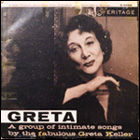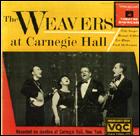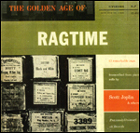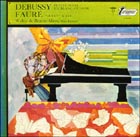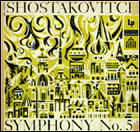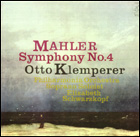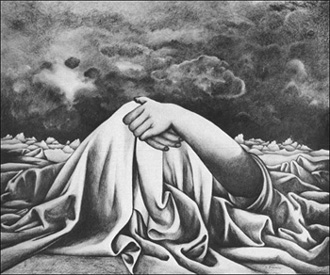
Evocation, 1976, pencil
Music
I
When we married, she brought with her an excellent portable record player, as well as the camera that I appropriated. She also brought a fine Marlene Dietrich 10" LP, a good Billie Holiday one, and a marvellous one by the then little-known Greta Keller, the distilled essence of romantic love and yearning. “I Get Along Without You Very Well,” “These Foolish Things,” and “One for My Baby” were especially seductive, but she said that the first of these was the best, and she was right.
She had a number of other records—something by Chris Connor; Saint-Saens’ Carnival of the Animals; something by Debussy; a jazzed-up version of Bach; a record by the folk-singer Richard Dyer-Bennett; a record of Christmas choral music; Brahms’ First and Second string quartets; Haydn’s The Creation, a one-record version of The Messiah ; the Goldberg Variations (or was it a volume of the Well-Tempered Clavier?) played by Wanda Landowska; the Mark Blitzstein verion of The Beggar’s Opera; Berg’s Lulu, complete.
She had one or two recordings of Dylan Thomas reading his own poetry, and a recording of The Cocktail Party, with Alec Guinness. I myself owned no records.
II
In those happy far-off days one could go into a record store, pick out a stack of records, and go into a sound booth and play them. There was a good record store around the corner from our Dinkytown apartment in Minneapolis, and we did a fair amount of Saturday-morning listening and occasionally buying. She was pretty emphatic when she didn’t like something much, and when she didn’t like something we didn’t buy it.
Among the classical records that we bought were: three or four of Beethoven’s late Quartets played by the Budapest String Quartet, and still, to my ears, sounding better than any other versions that I’ve heard; a couple of records of Mozart’s string quintets, also by the Budapest; Berlioz’ Symphonie Fantastique; Shostakovitch’s Fifth Symphony; four of Sibelius’ symphonies (she remarked that the Fifth was tragic); two or three Deutsche Grammophone recordings of Bach’s organ music by Helmuth Walcha; Beethoven’s Hammerklavier Sonata played by Wilhelm Kempf, for both of us a high point; the great recording by Menuhin and Wandowska of Bach’s Sonata in E; Petrouchka.
Among the jazz records were: Billie Holiday’s still unsurpassed Lady Day (in those days someone at Columbia, perhaps John Hammond, was putting LP’s together as if composing complete works), the Bix and Tram album in The Bix Beiderbeck Story; Louis Armstrong’s Hot Five in The Louis Armstrong Story, also volume 4 in that set; the 10-inch Satchmo Sings (at least I think it was bought then); a Jelly Roll Morton album; a record by Ruby Braff and Pee Wee Russell.
We also, the first step in what was to be an enduring addiction, bought a Riverside record of Scott Joplin and one or two contemporaries, taken from the original piano rolls, some of them made by Joplin himself.
We bought a couple of 10-inch Leadbelly records, one of them the outstanding Take This Hammer. We bought a Susan Reed record, which charmed us both by its folk side (“Sweet Betsy from Pike,” and so on) and by the selection from Songs of the Auvergne on the other side. A friend, Don Jobes, sneered at Susan Reed and urged us to buy The Weavers at Carnegie Hall, which we did and played again and again for a lot of years, along with the marvellous record, acquired later, of Pete Seeger and Sonny Terry, also in Carnegie Hall. Once I brought home some Ewan McColl a capella records from the University music library, and these were listened to a good deal.
Sunday was the day for organ music, Saturday for folk and jazz.
III
After we had moved to Halifax and were living on Queen Street, we had a better record-player—a used high-fi console model—and more money to buy records with. The record player was one that she picked. I was all set to buy a tinny gimmicky model that could double as a coffee table, but she dismissed it scornfully. The model we bought, for about $600 used, was in fact a luxury model with a rich full sound and we continued playing it long after other people had switched to stereo.
It would be tedious to list all the records that we bought during the Queen Street years, but the record player was going constantly and loudly. At supper time, when we weren’t going to listen to the radio, she would usually say, “You choose,” and I tended, I think, to choose jazz—Armstrong, Bechet, Miles Davis and Coltrane in their more melodic moods, Billie, Bix, Jelly Roll, Jimmy Yancey, Bunk Johnson.
IV
Memories blend and blur. Before we moved to Oakland Road, we had always gone on trips together. Afterwards, we made various trips separately, and my summer week in New York became almost an annual, or biennial, ritual. I forget when I bought Yves Montand’s Paris Recital and the accordion record Songs We Heard When We Were in France—”Le Java Bleu,” etc—, but she liked them very much, and they were played again and again, along with a Paris accordion record by Jo Basile and his orchestra.
When I was in Montreal in the Seventies, I bought what became one of her—of our—favourite records, the one on which Jean-Pierre Rampal and Rene Bartoli play pieces by Loeillet, Vise, Giuliani. She swore that we had heard Rampal playing, perhaps playing one or more of these pieces, at the recital in the cloisters of the church at St.Maximin that we had attended one night in 1966 when we were staying in nearby Seillons—a magical occasion. She was almost certainly right, to judge from a statement on the jacket cover that these pieces had been performed there.
We both loved Fauré’s Dolly Suite, recorded on one of the budget labels. Those two records were probably played more than any other classical ones.
In 1967, after reading a groundbreaking review by the musicologist Wilfred Mellers, I went out and bought the Beatles’ Sergeant Pepper. I bought all the Beatles’ records that came out after that, and two or three earlier ones, C. liked Bob Dylan, and kept one of his records in her studio.
V
In part because of the comments of a former student, Guy Pothier, who despite very poor eyesight appeared to read every new book and periodical that came out, and who was very knowledgeable about music, I made occasional forays into modernism, but they didn’t amount to much. Recordings of Webern, Honegger, Roussel, Boulez, Carter, Stockhausen, even Cage, were bought and dutifully listened to, but they simply didn’t stick, and were only occasionally returned to for awhile, and finally not at all.
Basically the two of us really only liked what Willie Garvin in one of the Modesty Blaise thrillers called the tuneful kiddies. So some things came to be played over and over, regardless of whether they constituted the “right” kind of musical diet or not—Schubert’s great Quintet (not the Trout, the other one). Elgar’s Cello Concerto, Mahler’s Fourth, Fauré’s Dolly Suite, the Rampal/Bartoli record, the Songs of the Auvergne sung by Victoria de los Angeles, and several anthologies of songs and arias sung by individual singers, Callas among them. We also became enamoured of classical guitar after hearing John Williams first and best LP, the budget one with the pink cover, and picked up, here and there, fifteen or twenty guitar records.
I bought every ragtime record that I came upon. Our two favourites were the one by Itzhak Perlman and André Previn and the Royal Ballet Company’ orchestra’s performance of Scott Joplin’s Elite Syncopations.
VI
I have been speaking of music listened to in the house. She had records out in the studio, which she played on a cheap paint-smeared portable, and some tapes. I cannot at the moment lay my hands on the studio records, but I am pretty sure there were symphonies and concertos among them, by Brahms, Prokofiev, Elgar, Berlioz, Dvorak, and others. Oh, and chamber-music pieces by Fauré, Elgar, Mozart, Schubert, Brahms. One of our copies of Berlioz’ Requiem was out there. She adored that great work.
She would also, when Easter approached, play Berlioz’ L’Enfance du Christ, which she also adored. At Christmas there was Christmas music in the house, mostly carols, and Menotti’s Amahl and the Night Visitors, and the impeccable Caedmon recording of A Christmas Carol, with Paul Scofield narrating and Ralph Richardson playing Scrooge.
She listened every Saturday afternoon in her studio to the performances of opera at the Met, and particularly liked works like Madame Butterfly, but one of the few complete recordings of an opera in the house was the last one that Mozart wrote, which I bought after reading it described as the best neglected opera. She had no interest in listening to it, or in sitting down and listening to any complete opera. Nor did I. Opera seemed a very odd art form to me, or at least the kind of Italian opera that sent the fans into screaming fits at the Met.
Occasionally I would come home and find her listening to T.S. Eliot’s The Cocktail Party, a work which must have spoken to her pretty intimately.
VII
She had no desire to shift to CD’s. She thought the cult of the compact a bit precious. She herself was unbothered by the surface noises on our much-played records. She became angry, in an “I don’t want to hear about it” fashion, when I intimated from time to time that the quality of our stereo system was not all that it might be.
She had little interest in going to live performances of classical music. I took her to hear the good, and very “pure,” jazz cornettist Doc Evans and his Dixieland group on our first date, and from time to time I dragged her (she didn’t kick and scream) to other performances of traditonal jazz—Louis Armstrong in St Paul, Jimmy McPartland in Chicago, a group whose name ecapes me in New Orleans, Earl Hines and the Preservation Hall Jazz band (separately) in the Cohen auditorium at Dalhousie.
On our way back in 1990 from the Ajijic sabbatical, we stayed in New Orleans again and wandered along Bourbon Street listening from the street to two or three groups indoors. She genuinely liked New Orleans jazz—said to me a bit crossly once, in the later Eighties, that I never played any more the record of Punch Miller that we had bought years before at a specialist store in Chicago.
VIII
But she never expressed any eagerness to go to classical concerts—never said, “Oh, we mustn’t miss that!” At least I don’t recall her doing so. It’s conceivable that were she reading these jottings she would say, “You know perfectly well that if I’d done so you would have been too busy.” But I think that basically she didn’t much like having to sit at attention in a large group for two-and-a-half hours.
When Torvil and Dean, two of her absolute top heroes, skated in the Halifax Forum, she expressed no desire to go and see them. Recorded music was much more intimate than the real thing.
Essentially, neither of us liked Bop, or Rock, or what I shall loosely call modern jazz, though when she was out of town I would sometimes get drunk on Smirnoff vodka and play very loudly the soundtrack from The Buddy Holly Story and the famous side from Keith Jarrett’s Köln Concert. She said once or twice in the Eighties that she had heard a few numbers by Elvis and was surprised by what a good voice he had. I suspect she wasn’t talking about his rock numbers. She had also brought a record by Chris Connor into the marriage with her.
When she was a kid, her parents had made her take violin lessons, but she had no aptitude for the instrument and no desire to learn. She could play the piano a little, I think, but I never heard her do so. She spoke at various times of how much she had enjoyed being in the chorus of The Messiah, probably during her college years. She also once or twice expressed regret, most recently in Ajijic, at how her illnesses had ravaged her voice, so that now she couldn’t sing even were she to want to.
Looking back over what I have written, I would say that there was a lot of music in her life, even though very largely recorded music.

Study for a Language Lesson, 1977, pencil



